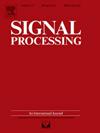Infrared NeRF reconstruction based on perceptual pose and high-frequency-invariant attention
IF 3.4
2区 工程技术
Q2 ENGINEERING, ELECTRICAL & ELECTRONIC
引用次数: 0
Abstract
Infrared images present significant challenges in novel view synthesis (NVS) due to low resolution and limited texture features. Additionally, the adaptive gain mechanism in infrared cameras leads to variations in the illumination across different viewpoints. These all can result in potential failures when utilizing infrared images for reconstructing Neural Radiance Fields (NeRF). To address these issues, we propose an end-to-end framework for pose estimation and rendering optimization. Specifically, perceptual pose optimization is used to estimate more accurate camera pose. To enhance the matching accuracy of multi scene corresponding points, we retain high-confidence camera poses while jointly optimizing both the scene and low-confidence poses. This allows for high-quality 3D scenes with accurate pose estimation for infrared images. The high-frequency-invariant attention module is designed to focus on the high-frequency features not easily captured and invariant edge information in infrared images by densely sampling, which can use high-frequency region to compensate for the low-frequency region differences caused by the adaptive gain mechanism. We evaluated our approach on datasets consisting of near-infrared, mid-wave infrared, and long-wave infrared images. Our method successfully reconstructs NeRF using infrared images and outperforms the state-of-the-art methods in terms of performance. The dataset is available at: https://github.com/YuangChen111/IR-NeRF
基于感知姿态和高频不变注意的红外NeRF重构
红外图像由于分辨率低和纹理特征有限,在新视点合成(NVS)中面临重大挑战。此外,红外相机的自适应增益机制导致不同视点的照度变化。当利用红外图像重建神经辐射场(NeRF)时,这些都可能导致潜在的故障。为了解决这些问题,我们提出了一个端到端的姿态估计和渲染优化框架。具体来说,感知姿态优化用于估计更精确的相机姿态。为了提高多场景对应点的匹配精度,我们在保留高置信度相机姿态的同时,对场景和低置信度相机姿态进行联合优化。这允许高质量的3D场景与准确的姿态估计红外图像。高频不变注意模块主要针对红外图像中不易捕获的高频特征和边缘信息,通过密集采样,利用高频区域补偿自适应增益机制造成的低频区域差异。我们在由近红外、中波红外和长波红外图像组成的数据集上评估了我们的方法。我们的方法成功地利用红外图像重建了NeRF,并且在性能方面优于最先进的方法。该数据集可从https://github.com/YuangChen111/IR-NeRF获取
本文章由计算机程序翻译,如有差异,请以英文原文为准。
求助全文
约1分钟内获得全文
求助全文
来源期刊

Signal Processing
工程技术-工程:电子与电气
CiteScore
9.20
自引率
9.10%
发文量
309
审稿时长
41 days
期刊介绍:
Signal Processing incorporates all aspects of the theory and practice of signal processing. It features original research work, tutorial and review articles, and accounts of practical developments. It is intended for a rapid dissemination of knowledge and experience to engineers and scientists working in the research, development or practical application of signal processing.
Subject areas covered by the journal include: Signal Theory; Stochastic Processes; Detection and Estimation; Spectral Analysis; Filtering; Signal Processing Systems; Software Developments; Image Processing; Pattern Recognition; Optical Signal Processing; Digital Signal Processing; Multi-dimensional Signal Processing; Communication Signal Processing; Biomedical Signal Processing; Geophysical and Astrophysical Signal Processing; Earth Resources Signal Processing; Acoustic and Vibration Signal Processing; Data Processing; Remote Sensing; Signal Processing Technology; Radar Signal Processing; Sonar Signal Processing; Industrial Applications; New Applications.
 求助内容:
求助内容: 应助结果提醒方式:
应助结果提醒方式:


